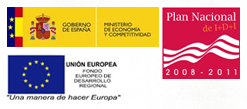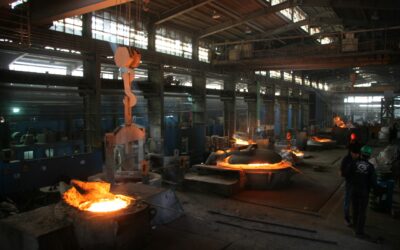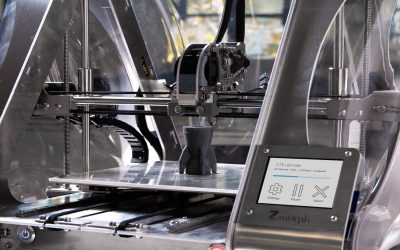cartif projects
CIBIC
Description
The CIBIC project (“Conservation of infrastructures based on Computational Intelligence”) arises with the objective of improving the services provided by the companies of conservation of infrastructures, based on the application of new technologies to carry out the concept of intelligent systems that will help to improve the quality and the innovation of these services. This project was funded with FEDEER funds by MINECO.
Through the application of Computational Intelligence techniques, the aim is to put into value the information, knowledge and experience that companies in the sector have accumulated over time, and which is not systematically exploited for many reasons.
Objectives
- Apply technologies based on Computer Science and ICT to the domain of maintenance and conservation of transport infrastructure, in order to formalize the existing experience and knowledge as a result of the years of activity.
- Reduce the costs of maintenance operations and increase the lifetime of the infrastructure
- Generate a competitive advantage that allows to improve products and services through an improvement of their efficiency.
Actions
- Collect and formalize existing knowledge, from different points of view, about the conservation of infrastructure (roads and railways).
- Detection and classification of evolutionary and/or abrupt failures that affect the use of the infrastructure and/or its safety.
- Decision Support System: preventive an reactive maintenance, depending on the estimated behavior and/or known status of the infrastructure.
Expected Results
- Models of evolution and behavior of infrastructures and their elements on which to apply methods of data mining. Once infrastructure evolution is known, it is possible to foresee deteriorations or failures that may be generated, as well as the maintenance operations to be carried out.
- Feasibility of applying Computational Intelligence techniques to the field of railway infrastructure maintenance, identifying some of the most appropriate techniques.
Partners
P.N. Investigación Aplicada Colaborativa 2009
 Overall budget: 597.894,60 €
Overall budget: 597.894,60 €
CARTIF Grant: 450.284,70 €
Duration: May 2009 – December 2010
Responsible
Marta Galende
Industrial and Digital Systems Division
Networking
Industry Projects:
PROCTWIN
PROCTWIN aims to develop a demonstration platform to predict and optimise the use of multiple stages in steelmaking.
Bi0SpaCE
bi0SpaCE accelerates the digital and circular transformation of Europe’s bio-based industries through Digital Product Passports (DPP) enhanced with Industry 4.0 technologies.
ARISE
The ARISE project envisions a near future which aligns with Industry 5.0, prioritising, resilient, sustainable and human-centric work environments. In such a future, companies recognise that investing in industrial human-robot interaction (HRI) is essential for achieving better short- and long-term goals, rather than a cost.
PREDICTIVO dB
PREDICTIVOdB seeks to develop an innovative solution for the maintenance of wind farms that is quick to implement and has low energy and economic requirements.
INTELIFER
INTELIFER consists of the optimisation of the process and products of a granulated NPK fertiliser manufacturing line with the support of Artificial Intelligence.
s-x-AIPI
The overall objective of s-X-AIPI (self-X Artificial Intelligence for European Process Indsutry digital transformation) is to research, develop, test and experiment an innovative toolset of custom trustworthy self-X AI technologies and applications.
PhotonHub Europe
PhotonHub Europe is the unique european Hub (DIH) in photonic that integrates the best technologies, facilities and knowledge in photonics as well as the experience of 53 partners of all Europe. The result is the creation of a unique window that offers a huge variety of support resources for industry to accelerate the integration of photonic in its products and processes.
AI REGIO
AI REGIO project aims at supporting AI-driven Digital Transformation of European Manufacturing SMEs, by up-scaling and coordinating different regional smart specialization strategies, by integrating DMPs and DIHs.
Transforming Transport
Transforming Transport project demonstrated, in a realistic, measurable an replicable wway the transformations that Big Data can bring to the mobility and logistics market. TT adress 13 pilots in 7 domains.
AI4EU
AI4EU project aims to make available to users resources based on Artificial Intelligence (AI) that facilitate scientific research and innovation.
Lashare
Lashare conducted 28 Laser-based Equipment Assessments (LEA-Laser-based Equipment Assessments) addressing a broad range of laser applications.
SMART FACTORY
Smart Factory project has addressed industrial research and technological validation of advanced data and information management systems for manufacturing industries in Castilla y León.
DISRUPTIVE
DISRUPTIVE is a cross-border cooperation project which strives to promote and strengthen the collaboration, exchange and scientific production of the Digital Innovation Hubs (DIHs) located in Castilla y León and in the North of Portugal.
SMART-ROT
The SMARTROT project aims to ensure high maintainability and predictive fault detection in eddy current rotary inspection equipment used in the bar, wire and tube processing lines of steel processes.
SIMAFE
SIMAFE project, whose objective is the development of a training and training platform for railway maintenance personnel, based on advanced HMI techniques, electronic training…
3DCONS
The 3DCONS Project (New Construction Processes by means of 3D Printing) focuses on 3D printing technologies in the construction industry and covers several areas: robotics, the search for new materials, process automation, the technological drive of building and the development of design tools based on Building Information Modelling (BIM).
SHERIFF
The SHERIFF Project (Hybrid and Economic System of Flexible Integral Facade Rehabilitation) new tools for the energy rehabilitation of buildings.




















